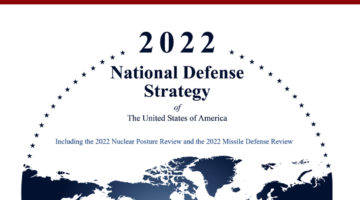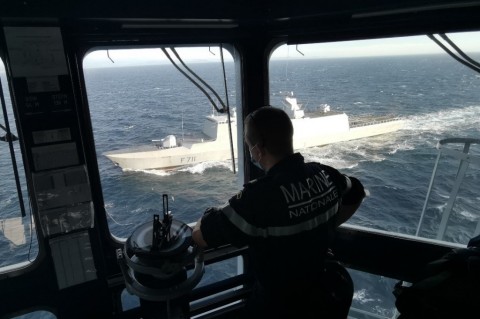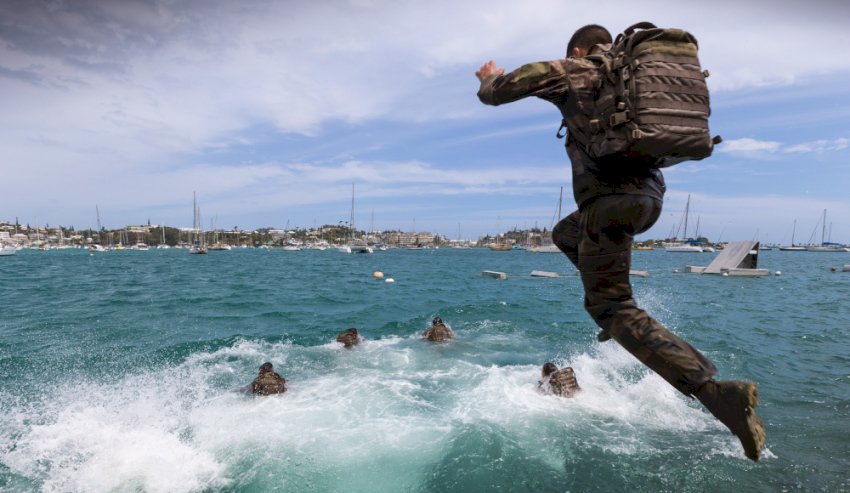(www.defenseconnect.com.au – Stephen Kuper -) US Studies Centre study calls for greater Australian Indo-Pacific pivot
The perfect storm of factors is seeing the US military capability in the Indo-Pacific “atrophy” in the face of rising tactical and strategic challenges driven by China, which has prompted a sharp decline in US military primacy and calls from within the United States Studies Centre for Australia to begin a renewed period of reorientation towards the region.
Australia has long sought to balance the paradigms of strategic independence and strategic dependence – seemingly limited by a comparatively small population and industrial base, the pendulum has always swung more heavily towards a paradigm of dependence, however the changing nature of domestic and global affairs requires renewed consideration.
Australia’s earliest strategic relationship with the British Empire established a foundation of dependence that would characterise all of the nation’s future defence and national security relationships both in the Indo-Pacific and the wider world. As British power slowly declined following the First World War and the US emerged as the pre-eminent economic, political and strategic power during the Second World War, Australia became dependent on “Pax Americana” or the American Peace.
The growing conventional and hybrid capabilities of peer and near-peer competitors – namely Russia and China – combined with the growing modernisation, capability enhancements and reorganisation of force structures in the armies of nations including India, Indonesia, Vietnam and Thailand, all contribute to the changing balance of economic, political and strategic power in the Indo-Pacific.
This perfect storm of factors, swirling like a maelstrom across Australia’s northern borders, has largely gone unnoticed by the Australian public, beyond the odd port visit by American or, as recently happened, Chinese naval vessels that seem to cause momentary flurries of concern. Meanwhile, Australia’s strategic and political leaders appear to be caught in an increasingly dangerous paradigm of thinking, one of continuing US-led dominance and Australia maintaining its position as a supplementary power.
Prior to establishing a new paradigm and priorities, it is critical to understand the nation’s history of strategic policy making and the key priorities that have defined Australia’s position in the Indo-Pacific since federation – traditionally, Australia’s strategic and defence planning has been intrinsically defined and impacted by a number of different yet interconnected and increasingly complex factors, namely:
- Guaranteeing the enduring benevolence and continuing stability of its primary strategic partner – via continued support of its strategic ambitions;
- The geographic isolation of the continent, highlighted by the ‘tyranny of distance’;
- A relatively small population in comparison with its neighbours; and
- Increasingly, the geopolitical, economic and strategic ambition and capabilities of Australia’s Indo-Pacific Asian neighbours.
- This state of ‘strategic dependence’ has placed Australia at a disadvantage and entrenched a belief that the nation is both incapable of greater independent tactical and strategic action and must consistently support the designs and ambitions of great powers, with little concern for the broader impact on Australia and its national interests as a form of insurance.
Recognising the increasing confluence of challenges facing enduring US tactical and strategic primacy, the University of Sydney-based United States Studies Centre (USSC) has released a telling study, titled ‘Averting Crisis: American strategy, military spending and collective defence in the Indo-Pacific’, which makes a series of powerful recommendations for Australian and allied forces in the region.
Declining US capacity spells need for greater Australian capability
One of the core challenges facing the US in the Indo-Pacific and, more broadly, key allies like Australia, Japan and South Korea, is the growing atrophy of America’s armed forces in the region, and the report cites a number of contributing factors directly impacting the capacity of the US to war of a peer competitor that is increasingly capable, equipped and well funded.
“America has an atrophying force that is not sufficiently ready, equipped or postured for great power competition in the Indo-Pacific — a challenge it is working hard to address. Twenty years of near-continuous combat and budget instability has eroded the readiness of key elements in the US Air Force, Navy, Army and Marine Corps. Military accidents have risen, ageing equipment is being used beyond its lifespan and training has been cut,” the study identifies.
“Military platforms built in the 1980s are becoming harder and more costly to maintain; while many systems designed for great power conflict were curtailed in the 2000s to make way for the force requirements of Middle Eastern wars — leading to stretched capacity and overuse.”
The USSC spells out the one thing few of Australia’s strategic policy thinkers and political leaders seem willing to come to terms with, beyond the radical fluctuations between doom and gloom scenarios: some of which range from a complete retreat by the US, leaving Australia and other regional allies alone, or a semi-retreat and focus on limiting risk to key American assets in the region.
In doing so, the USSC recognises that for the first time America has a true competitor in China – a nation with immense industrial potential, growing wealth and prosperity, a driving national purpose and a growing series of alliances with re-emerging, resource rich great powers in Russia, and supported by a growing network of economic hubs and indebted psuedo-colonies throughout the Indo-Pacific and Asia. (…)
*** SEE THE STUDY >>> https://www.ussc.edu.au/analysis/averting-crisis-american-strategy-military-spending-and-collective-defence-in-the-indo-pacific
READ FULL ARTICLE >>> www.defenceconnect.com.au
Photo : cover of report (See the pdf >>> Averting-crisis-American-strategy-military-spending-and-collective-defence-in-the-Indo-Pacific)












